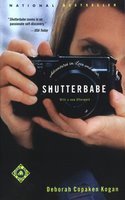
Deborah Copaken Kogan, Shutterbabe
If you like photography, this book is for you.
If you like writing that captures the intensity of war-torn Afghanistan in 1988, or transports the reader from the decandence of Switzerland to the parkways of France (stopping along the way in Romania and Haiti and Zimbabwe), documenting the zeitgeist of the 1990s "me-decade" all the while, this book is for you.
And if you like a narrator who is ditzy, self-centered, peevish, and whiny . . . well, umm . . . this book is for you.
What I liked about this memoir is the author's travels and descriptions of the cultures she encountered. She even made camera specs sound interesting, which only goes to show that her passion for her career (photojournalism) is infectious. However, I found her annoying, especially when she'd prattle on about the men in her life and the way they made her "feel" as a woman (ugh!). I just wasn't interested, and while I kept expecting (hoping, even) to see a bildungsroman-type self-awareness develop in her voice by memoir's end, it just never happened.
At the end of the book (and I'm not giving anything away here) Kogan includes a two-part Afterword, part one written prior to 9/11 and part two written just after, meant to highlight the "quaint but misguided relic of an ancient, more innocent era" (i.e., the pre-9/11 American mindset). What I find most disturbing is just how "quaint" and "ancient" that one brief moment in American history immediately following the WTC attacks seems today -- that moment when Americans felt (and were perceived as) victimized and received the world's sympathy.
Taken in today's 2005 context, that era too seems like a "misguided relic."
Overall, this book was okay. I wasn't blown away, but it had its moments.
